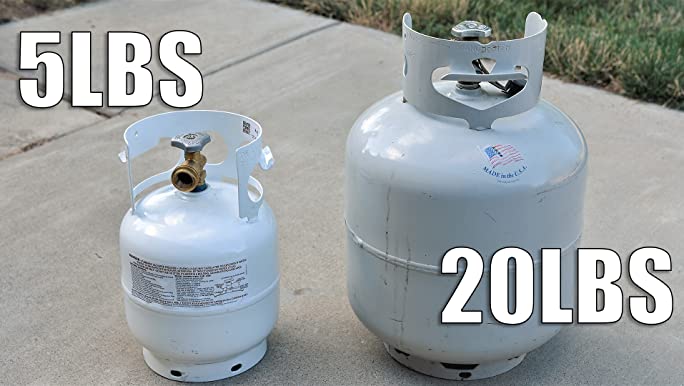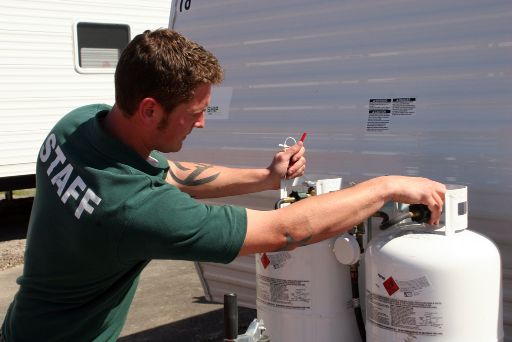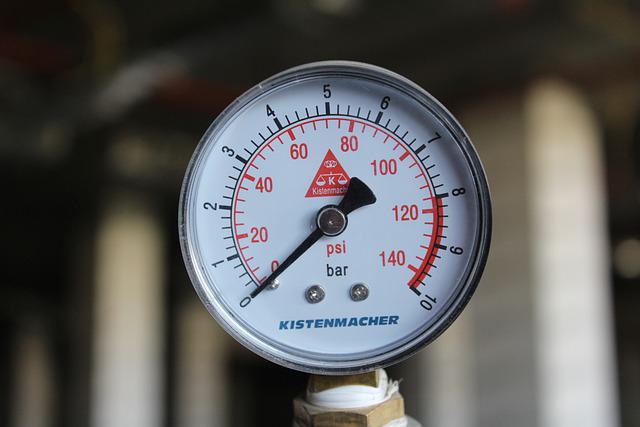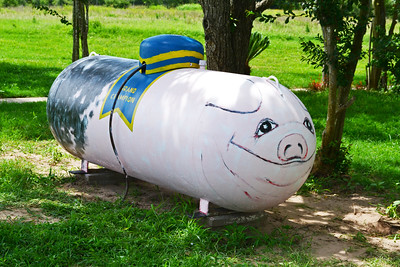
The cost of propane tanks varies depending on their size and usage. While it may seem that a 5-lb propane tank would be cheaper than a 20-lb tank because of the difference in volume, the price difference is due to several factors.
One of the main reasons for the price difference is the cost of materials. Smaller propane tanks are made from thinner and lighter materials compared to larger tanks, which requires more precision and skill in the manufacturing process. This means that the production costs of smaller tanks are higher, leading to a higher price per unit.
Another factor is transportation costs. 5-lb propane tanks are smaller and lighter, making them easier to transport and distribute. However, the cost of transporting smaller tanks is higher on a per-unit basis compared to larger tanks, which are more cost-effective to transport due to their size and weight.
Regulations and safety standards also play a role in determining the cost of propane tanks. Smaller tanks must meet stricter regulations and safety standards due to their portability, which can add to their production and transportation costs.
Lastly, demand also affects the price of propane tanks. 5-lb tanks are often used for specific applications such as camping and portable grilling, making them more in demand among certain customers. This increased demand drives up the price, as supply struggles to keep up with demand.
The cost difference between 5-lb and 20-lb propane tanks is not solely due to the difference in volume produced. Materials, transportation, regulations, and demand all play a role in determining the price of propane tanks. While volume may be a factor in determining the cost of manufacturing, it is not the only one.
5-lb propane tank vs. 20-lb propane tank
| Feature | 5-lb Propane Tank | 20-lb Propane Tank |
|---|---|---|
| Capacity | 5 lbs (2.27 kg) | 20 lbs (9.07 kg) |
| Size | Small and portable | Larger and bulkier |
| Usage | Portable grilling, camping | Home heating, cooking, outdoor power equipment |
| Cost | Higher due to production and transportation costs for small size, increased demand for portable usage | Lower due to larger volume and size, cost-effective transportation |
| Regulations | Stricter due to portability and safety concerns | Less strict, but still subject to safety regulations |
| Refill Options | Must be refilled at a propane refill station or exchange program | Can be refilled at home with a larger propane tank or at a refill station |
| Run Time | Limited by small capacity | Can last longer with larger capacity |
How to Save Money When Buying Propane Tank
Here are some tips on how to save money when buying a propane tank:
- Shop Around: Comparison shop at different retailers, both online and in-store, to find the best prices on propane tanks.
- Buy in Bulk: If you use propane tanks frequently, consider buying in bulk to take advantage of volume discounts.
- Take Advantage of Sales and Promotions: Look for sales or promotions, such as buy-one-get-one-free deals or discounts for buying multiple tanks.
- Refill Rather Than Replace: Refilling your propane tank is typically less expensive than buying a new one. Look for a local refill station or exchange program to save money.
- Consider Refurbished Tanks: Refurbished propane tanks may be available at a lower cost than new tanks. Make sure to only buy from a reputable source and to inspect the tank for any damage or wear before purchasing.
- Use Coupons: Coupons for propane tanks may be available in local advertisements or online. Look for printable coupons or promo codes to save money when purchasing a propane tank.
- Compare Tank Sizes: Consider the size of the tank you need and compare the cost per gallon of propane. A larger tank may be more cost-effective in the long run, despite an initial higher upfront cost.
- Buy During Off-Season: Prices for propane tanks may be higher during peak usage times, such as in the winter months. Try to buy your propane tank during the off-season to take advantage of lower prices.
By following these tips, you may be able to save money when buying a propane tank.
How Much Does 5-lb and 20-lb Propane Tank Cost
The cost of a 5-lb and 20-lb propane tank can vary greatly depending on several factors. Some of these factors include location, retailer, market conditions, and current demand.
A 5-lb propane tank is typically smaller and intended for use in portable stoves, campfires, and other small appliances. As such, they are often sold at a premium, with prices ranging from $15 to $30. The size and portability of these tanks make them a convenient option for outdoor and recreational use, but they also come with a higher per-gallon cost compared to larger tanks.
On the other hand, a 20-lb propane tank is larger and intended for use with bigger appliances, such as grills, patio heaters, and fire pits. These tanks are typically more cost-effective, with prices ranging from $30 to $60. It’s important to note that the price of a 20-lb tank may be slightly lower if you opt for a refurbished tank, or if you buy it during a sale or promotion.
The cost per gallon of propane is an important consideration when purchasing a tank, as this will have a significant impact on your overall expenses. A larger tank may have a higher upfront cost, but the cost per gallon of propane will be lower, making it a more cost-effective option in the long run.
It’s also important to factor in the cost of refilling or exchanging the tank. Many retailers offer refill or exchange programs, and it’s generally more cost-effective to refill your tank than to purchase a new one. Additionally, consider the distance you need to travel to refill or exchange your tank, as this may impact your expenses as well.
To Make a Conclusion
The 5-lb propane tank is more expensive than the 20-lb tank due to several factors, including production volume, convenience, and demand. 5-lb tanks are smaller and intended for portable use, which makes them a convenient option for outdoor and recreational activities. However, this convenience comes at a premium, and the smaller tank size results in a higher per-gallon cost.
On the other hand, 20-lb tanks are larger and intended for use with bigger appliances, which results in a lower per-gallon cost and a more cost-effective option in the long run. When choosing between the two, it’s important to consider the cost per gallon of propane, the cost of refilling or exchanging the tank, and the distance you need to travel to refill or exchange the tank.
Image credit: Amazon (We don’t own the image used in this article)

Mike is an experienced propane technician with over 15 years of professional experience in the field. He has dedicated his career to helping customers with their propane needs, from installation to maintenance and repair. Together with Jeremy, he co-founded this website to provide useful information and guidance to customers seeking reliable propane services.




